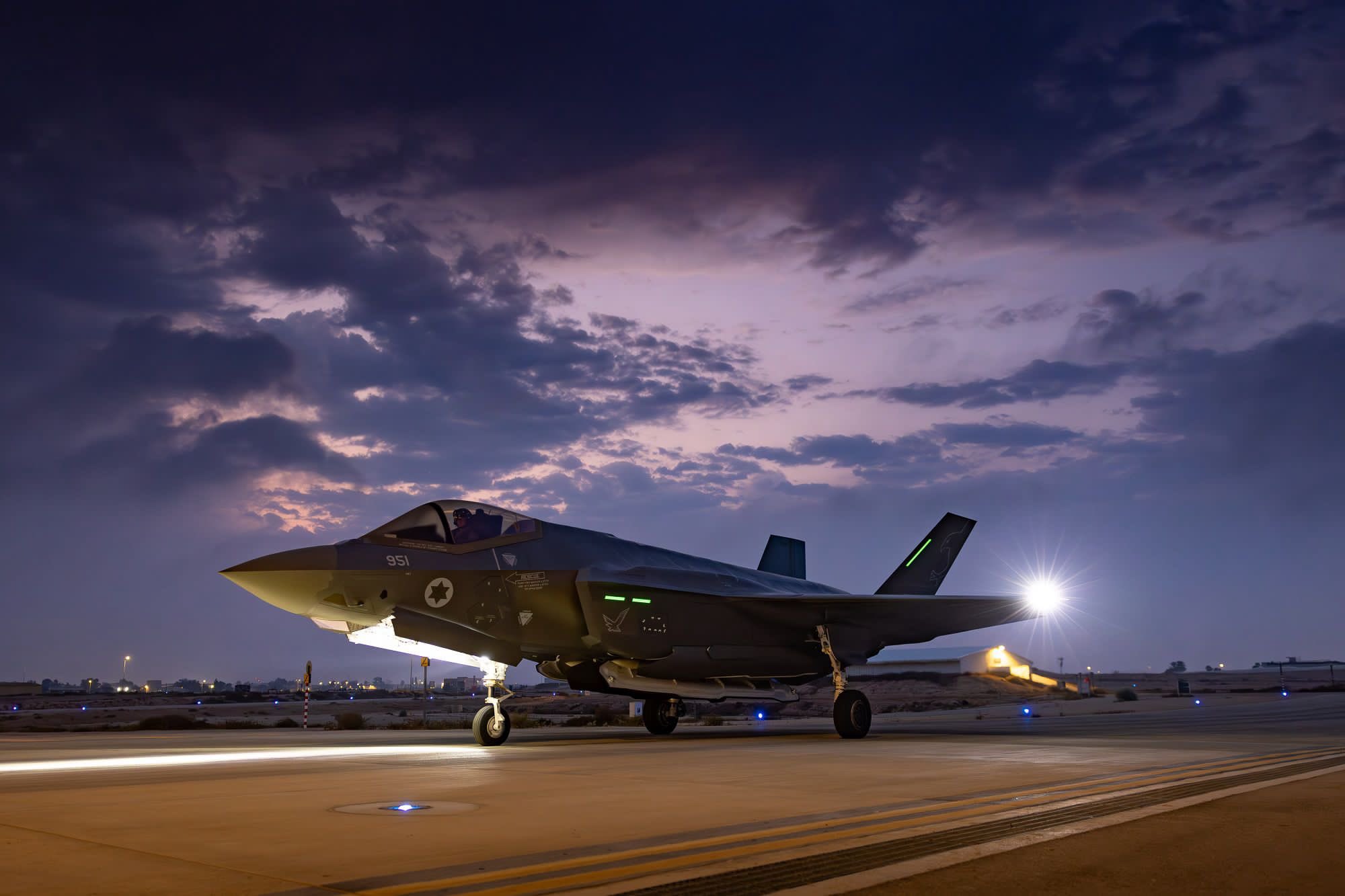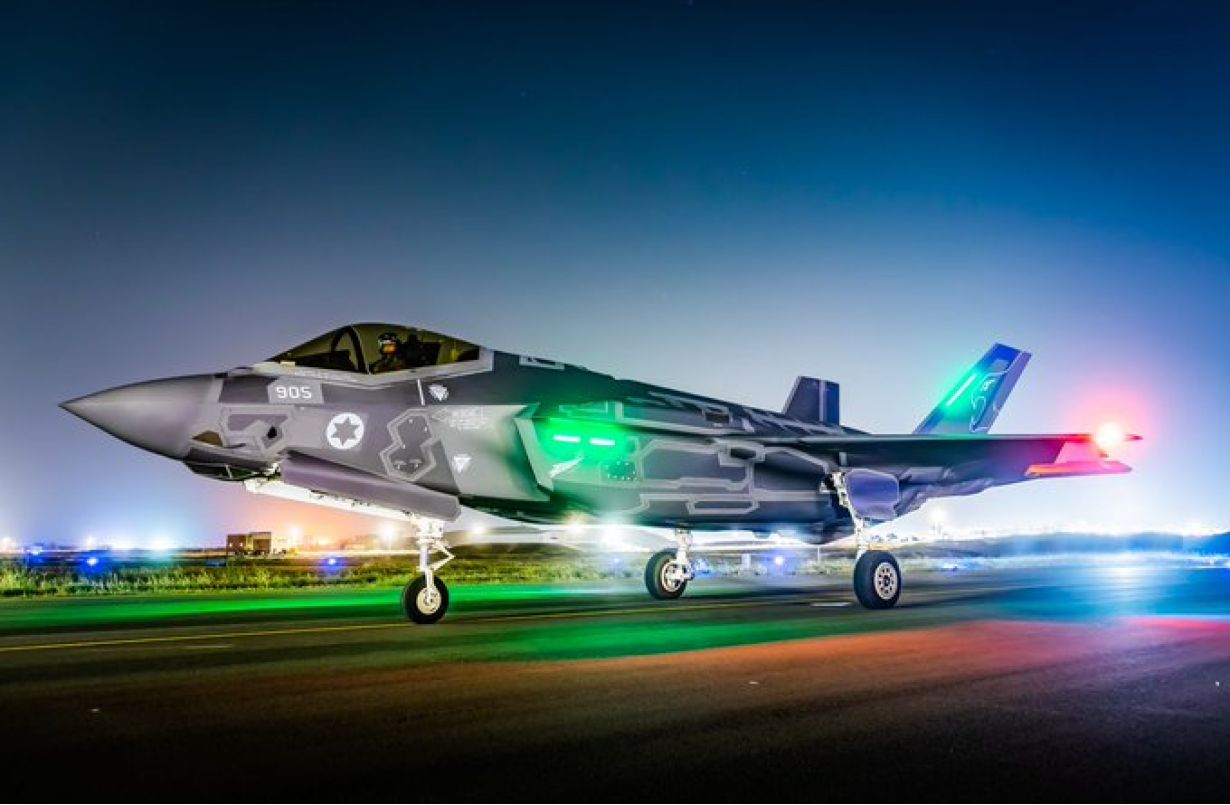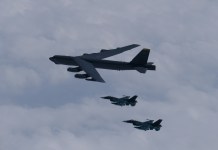Nearly two months after practicing to hit an Israeli Air Force (IsAF) base that hosts its F-35 Lightning II fighters with ballistic missiles, Iran finally attacked the IsAF military base in its ‘retaliatory strikes.’
Assessments of Iran’s missile attacks vary. While some say that it was completely unsuccessful since all projectiles were shot down, others point out that Iran never planned material and military damage, with a view to prevent a wider war.
According to US media reports, five Iranian missiles struck Israel’s Nevatim Airbase, damaging the main runway, a C-130 transport aircraft, and several storage facilities.
Iran’s Foreign Minister, Hossein Amir-Abdollahian, said in a speech – “The Iranian military operation against Israel was limited and aimed at squadrons of F-35 aircraft. The Israeli attack on our consulate violates international laws and treaties, and we will not hesitate to defend our interests in the face of any attack.”
Tensions between the two countries had been high after Israel conducted an air strike on the Iranian embassy in Damascus, Syria, that killed a senior officer of the Islamic Revolutionary Guard Corps (IRGC), among others. Reports said Israel used F-35 jets for this air raid.
According to a report in the Times of Israel (TOI), the “main target of Iranian drones and missiles…appeared to be a sensitive air base in southern Israel, Nevatim, home to the F-35 stealth fighter jet, the military’s most advanced aircraft.”

According to IDF, all the drones and cruise missiles were downed outside of the country’s airspace by the Israeli Air Force and its allies, including the United States, United Kingdom, Jordan, France, and others – according to the IDF’s top spokesman, Rear Admiral Daniel Hagari.
The drones had a flight time of multiple hours to reach Israel, and the cruise missiles similarly would have taken around more than an hour to reach their target, according to assessments by defense officials.
The ballistic missiles, however, have a much shorter flight time—around 10 minutes—and are more challenging to intercept. Some managed to evade Israel’s air defenses early Sunday.
The IDF said that the long-range Arrow air defense system knocked down the “vast majority” of the 120 ballistic missiles. The Arrow 3 system is designed to take out ballistic missiles while they are still outside the atmosphere.
“Unlike the drones and cruise missiles, the ballistic missiles were shot down over Israel,” the report added. It is not clear, however, if missiles were actually tracked or spotted heading towards Nevatim or fell in the air base’s vicinity after being shot down.
Iran ‘Simulated’ Striking Israeli F-35 Base Before
Late in February, Iran had “simulated” an attack on an Israeli air base operating F-35I fighters by firing its Emad and Qadr ballistic missiles.
A clip from a news feature of the launch showed four to five truck-mounted road-mobile launchers rolling into position and firing the missiles. These trucks, appearing to be normal civilian carriers, would be difficult to identify as military targets from overhead satellites or drones.
#BREAKING Iran’s IRGC says it has fired Emad and Qadr ballistic missiles with “enhanced explosive warheads” to destroy a “simulated version” of Israel’s Palmachim airbase “where Israel’s F-35 fighter jets are located,” a video aired by the state TV shows. pic.twitter.com/It6oDjjY4T
— Iran International English (@IranIntl_En) February 13, 2024
A longer version of the clip shows Iran also firing ballistic missiles from regular container ships, which would be hard to differentiate from civilian Marine traffic during war. Reports identified these systems as the Qadr and Emar ballistic missiles.
The two are specifically designed to target large bases, and in this case, particularly Israel’s Palmachim air base where its “F-35 jets are located,” as the Iranian officer tells the news presenter.
The missiles have “enhanced explosive warheads” that destroyed a “simulated version” of the base. However, a thread by defense commentator Tal Hagin said that Israel does not station F-35s at Palamchin but at Nevatim.
The Qadr-1 is an improved version of the Shahab-3A, also known as Qadr-101 and Qadr-110. It was unveiled in 2007 and tested in 2015, clocking ranges between 1,600 to 1,950 km. The missiles’ conical nose and cylindrical shape suggest a lighter warhead payload of around 750 kg. However, its reentry vehicle might have higher speeds, complicating interceptions by missile defense systems.
The Emad, introduced in 2015, is a Medium-Range Ballistic Missile (MRBM) that can reach 1,700 km with a 750 kg warhead. It was billed as the first Iranian missile capable of being guided and controlled until it hits its target.
Essentially, it is a modified reentry vehicle intended to be mounted on a Shahab-3 or Qadr missile. It offers increased stability and maneuverability for improved accuracy. While the weapons (the ballistic missiles) themselves are not stealthy, their target is stealth killing, and their manner of operation is equally stealthy.
Put differently, Iran would use weapons and tactics that preempt the Israeli F-35 on the ground before it takes off—or at least significantly damage the base to put it out of action for a long time. Iran can exploit the F-35’s temporary absence from the battlespace to achieve many tactical or strategic goals.

F-35 is Israel’s Leading Weapon
The F-35 is the most vital aircraft in Israel’s arsenal. Using its stealth, electronic intelligence (ELINT) devices, and sensor fusion, it can locate ground-based air defenses first and alert other friendly aircraft.
However, the plane’s high cost and technology mean it cannot be used for routine frontline missions—at least not all the time—but rather as an airborne tactical coordination and command, mostly invisible to enemy eyes.
For strike missions, it could be paired with a larger fighter like the F-15, acting as a ‘missile truck’—releasing radar-killing or other air-to-ground missiles based on information received from the F-35 via a data link. The F-35 is too valuable to be flown close to or directly above Iranian skies.
Iran already claims its Bavar-373 is comparable to Russia’s S-400 air defense system and poses a similar threat to the F-35, as the US maintains the Russian platform.
- The author can be reached at satamp@gmail.com
- Follow EurAsian Times on Google News




